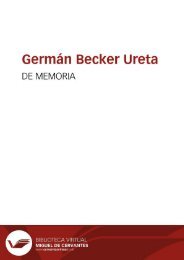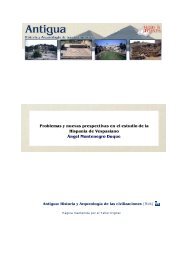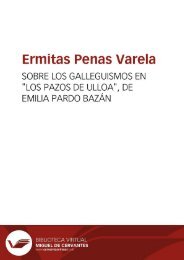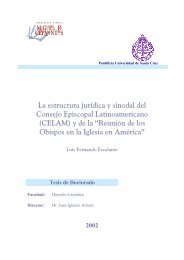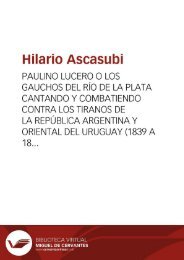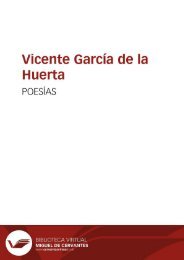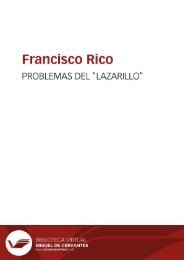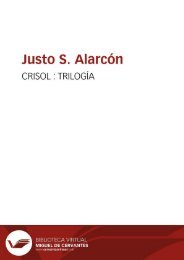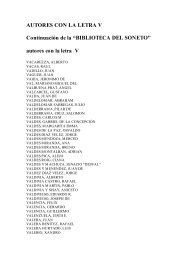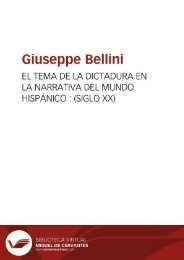You also want an ePaper? Increase the reach of your titles
YUMPU automatically turns print PDFs into web optimized ePapers that Google loves.
Anales galdosianos [Publicaciones periódicas]. Año XII, 1977<br />
of the profound historical (or materialist) vision which imbues this novel, the conclusion is still posed<br />
in spiritual (or idealist) terms.<br />
This oscillation between the historical and the spiritual is present throughout the contemporáneas .<br />
But whereas in Fortunata y Jacinta the historical predominates, in later works the reverse is true. A<br />
shift in this direction has been generally accepted by critics. Joaquín Casalduero has noted: « Fortunata<br />
y Miau llevan directamente a <strong>Galdós</strong> a sentirse perdido ante la realidad, a ver en la realidad una<br />
incógnita, que puede despejarse únicamente con ayuda del espíritu. A partir de La incógnita el drama<br />
individual se le aparece en toda su intensidad » 217 . With specific reference to Ángel Guerra, Nazarín<br />
, and Halma , Gustavo Correa refers to « el proceso que podemos denominar de espiritualización<br />
» in which « las limitaciones que encierra la realidad ambiente y circunstancial quedan superadas en<br />
un plano de trascendencia que brota de las honduras del sentir religioso ». 218<br />
The historical conjuncture of the 1890's in Spain certainly provided little hope for favorable<br />
developments, and this fact helps to explain <strong>Galdós</strong>'s search for a spiritual solution. The bourgeois<br />
revolution had still not achieved its completion in Spain, and no class other than the bourgeoisie<br />
was yet able to provide a concrete alternative 219 . Moreover, the conjuncture was characterized by a<br />
217 Vida y obra de <strong>Galdós</strong> (Madrid: Gredos, 1970), pp. 97, 98.<br />
218 Realidad, ficción, y símbolo en las novelas de Pérez <strong>Galdós</strong> (Bogotá: Caro y Cuervo, 1967), p.<br />
163.<br />
219 Antonio Jutglar ( Ideologías y clases en la España contemporánea [Madrid: Cuadernos para el<br />
diálogo , 1968]) has observed the following about the irregular development of Spanish capitalism:<br />
España entró en lo que viene denominándose Edad Contemporánea, contando con una plataforma,<br />
económica, social y política, desigual y claramente tipificada, muy vinculada a los esfuerzos y<br />
tensiones dieciochescos. En este sentido, se ha señalado la patentización, a lo largo del XVIII, de<br />
las disparidades de un dualismo español, que hace coexistir un comercio pujante y una creciente<br />
tendencia (sensibilización) hacia el movimiento que conducirá al industrialismo en Europa occidental,<br />
junto con la permanencia, inmovilista, de unos extensos sectores de economía agraria fundamental<br />
vinculada a seculares sistemas técnico-jurídicos en plena decadencia . (pp. 15, 16) In another place<br />
(« Fenomenología social de la Revolución », RO , 67 [1968], 116-142) Jutglar attributes the Spanish<br />
bourgeoisie's failure to fulfill its historiec tasks to its fears of the potential power of the proletariat:<br />
« los núcleos burgueses observaban que si los sectores conservadores y tradicionales, más o menos<br />
apegados a las fórmulas y privilegios del antiguo orden tenían fuerza y empuje tan considerables, los<br />
161



